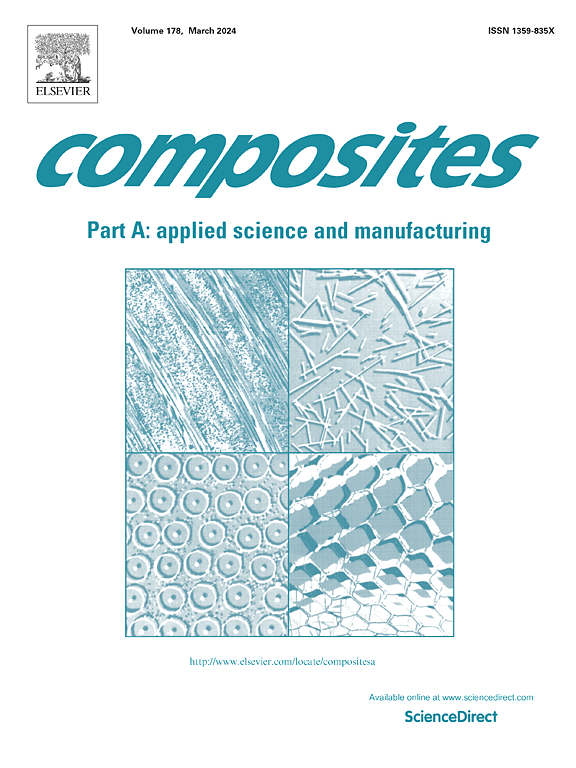Investigations of high mechanical performance of pultruded sisal fiber reinforced composites
IF 8.1
2区 材料科学
Q1 ENGINEERING, MANUFACTURING
Composites Part A: Applied Science and Manufacturing
Pub Date : 2025-05-02
DOI:10.1016/j.compositesa.2025.108976
引用次数: 0
Abstract
The comprehensive utilization of pultruded plant fiber reinforced composites (PFRCs) is limited by the sensitivity of twisting and hierarchical structures to processing parameters. Processing optimization and mechanical design of pultruded sisal fiber reinforced composites (SFRCs) were investigated. Firstly, a custom-designed pultrusion system was developed considering the twisting and hierarchical structural characteristics of plant fibers. Secondly, the processing parameters were optimized through experiments to enhance their mechanical properties. The relationships between the microstructure (twist angle), processing parameters (pulling speed and temperature) and mechanical properties (tensile, flexural and interlaminar properties) of pultruded SFRCs were clarified via ANOVA analysis. Finally, a modified theoretical model integrating variations in twist angle and processing parameters was proposed to predict the tensile modulus of pultruded SFRCs. The results demonstrated that the twist angle of sisal yarn decreased after formation due to tension. Accurate predictions on tensile modulus of pultruded SFRCs were achieved using the modified theoretical model.
拉挤剑麻纤维增强复合材料的高力学性能研究
拉挤植物纤维增强复合材料(PFRCs)的综合利用受到扭曲和分层结构对工艺参数的敏感性的限制。对拉挤剑麻纤维增强复合材料的工艺优化和力学设计进行了研究。首先,根据植物纤维的捻度和层次结构特点,设计了一种定制化的拉挤系统。其次,通过实验优化工艺参数,提高其力学性能。通过方差分析,明确了拉伸SFRCs的微观结构(扭转角)、工艺参数(拉伸速度和温度)与力学性能(拉伸、弯曲和层间性能)之间的关系。最后,提出了一种综合扭转角变化和工艺参数变化的改进理论模型,用于预测拉挤钢纤维的拉伸模量。结果表明,剑麻纱线在成纱后由于张力的作用,捻度减小。利用修正后的理论模型对拉挤钢纤维的拉伸模量进行了准确的预测。
本文章由计算机程序翻译,如有差异,请以英文原文为准。
求助全文
约1分钟内获得全文
求助全文
来源期刊

Composites Part A: Applied Science and Manufacturing
工程技术-材料科学:复合
CiteScore
15.20
自引率
5.70%
发文量
492
审稿时长
30 days
期刊介绍:
Composites Part A: Applied Science and Manufacturing is a comprehensive journal that publishes original research papers, review articles, case studies, short communications, and letters covering various aspects of composite materials science and technology. This includes fibrous and particulate reinforcements in polymeric, metallic, and ceramic matrices, as well as 'natural' composites like wood and biological materials. The journal addresses topics such as properties, design, and manufacture of reinforcing fibers and particles, novel architectures and concepts, multifunctional composites, advancements in fabrication and processing, manufacturing science, process modeling, experimental mechanics, microstructural characterization, interfaces, prediction and measurement of mechanical, physical, and chemical behavior, and performance in service. Additionally, articles on economic and commercial aspects, design, and case studies are welcomed. All submissions undergo rigorous peer review to ensure they contribute significantly and innovatively, maintaining high standards for content and presentation. The editorial team aims to expedite the review process for prompt publication.
 求助内容:
求助内容: 应助结果提醒方式:
应助结果提醒方式:


